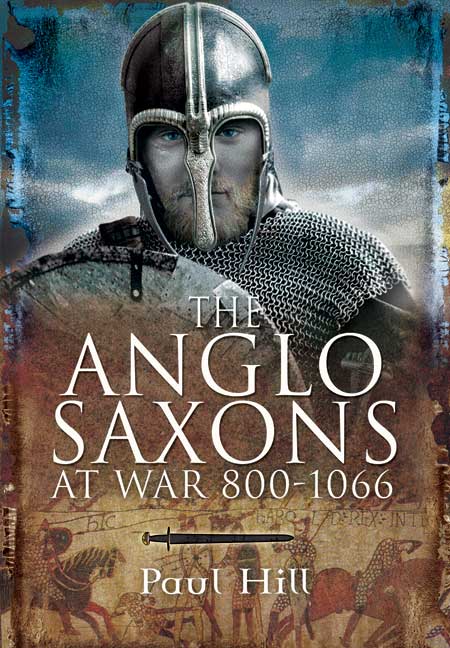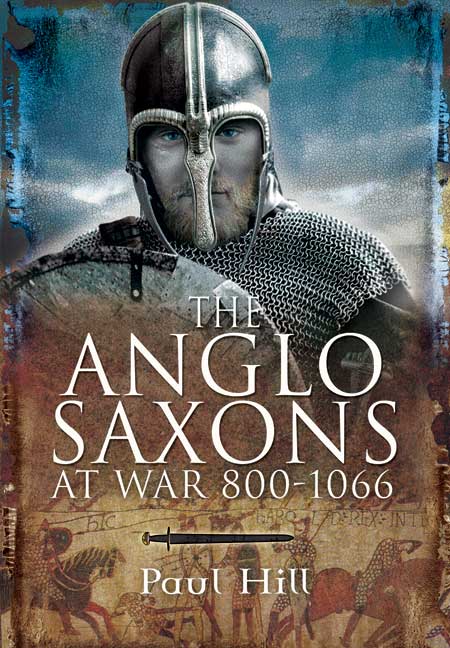Author Guest Post: Paul Hill
5 Key Weapons of the Anglo-Saxon Period
What did warrior Lords, shield-maidens and fighting Kings arm themselves with?
In an age of warrior Lords, shield-maidens and fighting kings such as Alfred the Great (871-899), Edward the Elder (900-924), Athelstan (925-939) and of course, the famous Harold Godwinson (1066), what were the main weapons used in the Anglo-Saxon period?
It was a brutal era where prowess in warfare was a key part of both successful government and social mobility. In England, a warrior in search of a Lord could earn considerable rewards. In some cases, such as that of Æthelflæd ‘the Lady of the Mercians’ who took-on the Vikings in Mercia, the ‘Lord’ may even have been a ‘Lady’. Rewards in the form of ornate silver rings, iron weaponry, land, money and a host of honours were there to be won. So let us look at those weapons which so characterised the marauding Dane and the stalwart Saxon?
Spears
‘There lay many a soldier
of the men of the North, shot over shield,
taken by spears.’
The poem of the Battle of Brunanburh 937
The spear is often overlooked in Anglo-Saxon warfare, and yet it was the most commonly employed weapon on the battlefield. Its long heritage stretches back to the Bronze Age. In Saxon times, it was constructed of an iron spearhead and an ash (or other flexible wood) shaft. They were not all the same though, and the evidence shows a variety of different uses.
The larger spears were called an Æsc (‘Ash’) and had a wide leaf-shaped blade. They were long-hafted and much prized. There was also the Gar. This was the most common term for a spear and we still preserve the term today in words like ‘garfish’ and ‘garlic’ (‘spear-leek’). Both the Æsc and the Gar were retained in the hands of their wielders in fighting, but lighter types were known with a thinner shaft and blade. These were the Ætgar and the Daroð, often described in flight, like a javelin. All of these types of spear, used en-masse within an infantry shield-wall, were highly effective weapons.
Swords
There is nothing quite as impressive in military archaeology as an Anglo-Saxon sword. They were worth a fortune and were often highly decorated around the hilt and guard areas. They were sometimes given personal names or carried the name of the smith who forged the high carbon blade. The earlier sword blades displayed what contemporaries saw as shining serpent-like patterns dancing on the blades. This refers to the pattern-welding techniques famous across Dark Age Europe. These swords often had symbolic rings attached to the pommel. These early forms were almost parallel sided and ‘point-heavy’ double-edged weapons designed for overhead slashing. Later types of the Viking period had a point of balance further towards the hilt and were easier to parry with. Hence, their cross guards were curved away from the grip.
Seaxes and Sidearms
The Anglo-Saxons were known by their contemporaries to carry with them a distinctive form of sidearm known as a seax from an early age. In the sixth century Gregory of Tours in his History of the Franks (iv, 51) refers to ‘boys with strong knives….which they commonly call scramasaxes’. The weapon was a single edged knife, often with an angled back. It came in long and short forms, the shorter of which are referred to in the heriots (a death-duty which lists military gear due to a Lord) as ‘handseaxes’. The longer types were almost of sword length and must have been used as slashing weapons. Like swords, a seax could be well decorated and even pattern-welded beneath the non-cutting edge where some were even inlaid with silver. The shorter handseaxes were slung across the midriff from a belt.
Axes
In the early period, the types of axes employed were sidearms as opposed to main weapons. These were short hafted throwing axes called franciscas. Usually, they were thrown at the enemy before an infantry onslaught. Not until the advent of the Danes in the ninth and tenth centuries do we come across the distinctive ‘Dane axe’, with its sharp cutting edge of up to 12-18 inches and its longer shaft. This is the weapon of the housecarl of the later Anglo-Saxon period. These types appear in abundance on the Bayeux Tapestry, mainly in the hands of well armoured men on the English side, although there is one which is being transported by the Normans to the battlefield and another in the hands of the Duke of Normandy himself. The occurrence of so many Dane axes in the Bayeux Tapestry might lend weight to the idea that the English King Harold had with him numerous Danish mercenaries.
Accounts of the Dane axe in use speak of its ability to cut a man and a horse with one stroke. The only drawback with wielding these weapons was that the user had to sling his shield over his back to wield the weapon two-handed. This led to a vulnerability when the weapon was held high. However, the effectiveness of the weapon was widely acknowledged across Europe. The axemen were not exactly killed off by the advent of the Normans in England, either. Further adventures would be experienced by those dispossessed axe-bearing warriors who left England and took service in the Byzantine Varangian Guard. Here in the east, the Dane axe had a new lease of life which lasted for at least another century.
The Bow
Just one lone English archer appears on the main panel of Bayeux Tapestry, as opposed to the serried ranks of Norman bowmen. He is unarmoured and seemingly smaller than the mail-clad warriors around him and he creeps out from the English shield wall. Some people believe this indicates the lack of military use of the bow by the Anglo-Saxons, the idea being that they dismissed it as the weapon of a poacher or hunter. Socially, it is certainly true that bowmen were treated disdainfully throughout the Anglo-Norman period. However, a glance at Old English poetry shows the ‘boga’ (a word which means to flex or bend) in the hands of some surprisingly high ranking figures and often used en-masse.
The famous poem Beowulf includes a description of a mass deployment of bows, indicating at least a knowledge of how they could be effectively organised:
he who often endured shower of iron,
when the storm of arrows, impelled by bow-strings,
shot over the shield-wall; shaft held true to task,
its feather-trappings eager, arrow-head followed.’
In other poems, we get depictions of the sky being full of arrows during battle and we are told the ‘bowstrings were busy’. So, perhaps our lone archer on the Bayeux Tapestry requires another explanation. Was he a hostage of the English, only permitted to have a bow to fight with, or was he merely a skirmisher? The mystery of the lone archer and the lack of English bowmen in 1066 seems set to continue.
Paul Hill is a lecturer, author and expert on Anglo-Saxon and Norman history and military archaeology, and he has written several books on these subjects, among them The Age of Athelstan: Britain’s Forgotten History, The Viking Wars of Alfred the Great and The Anglo-Saxons at War 800-1066.

View all titles here.


